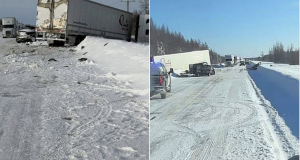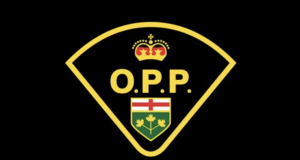Much angst has been generated over the last decade about the future of the former Algoma Central Railway (ACR), its abandoned Soo-Hearst passenger train and its suspended Agawa Canyon Tour Train. But have no fear! The Soo political brigade had good news in the wake of the December 17th announcement by CN that the ACR is up for sale or abandonment.
Sault Ste. Marie Mayor Christian Provenzano dipped into a barrel of clichés to find these words: “The city became aware of the sale prior to the asset being exposed to the market and we have been in constant communication with CN and the investment bank it has hired to market the asset… We are confident that if we stay engaged and continue to stress the importance of the tour train to our community and Ontario’s tourism industry that the end result of this process can be positive.”
This is like the captain of the Titanic telling frightened passengers, “Nothing to worry about; folks. We’re only stopping for ice.”
The ACR and all its passenger and freight operations have been in big trouble for many years, dating back to when the privately-owned railway was bought by the American regional railway, Wisconsin Central (WC) in 1995. That’s the same group that also bought the former CP line on which the Lac-Megantic disaster occurred in 2013 due to under-investment and sloppy practices, both sanctioned by Stephen Harper’s Conservative government.
When CN came a-calling in 2001, WC gladly sold its whole Midwestern U.S. and Canadian operation to them, including the ACR, which had been propped up with provincial and federal emergency funding from the start. CN didn’t want the ACR, but they did want WC’s American main line to complete their “lariat of steel” around the southern shores of the Great Lakes. Northern Ontarians might be concerned by the fact that this expanded CN system makes it possible to route traffic between Ontario and Western Canada through Chicago and dispense with the 1,200-mile slog from Toronto to Winnipeg on Canadian rails. The ACR was just the booby prize CN had to accept … for a while.
CN grudgingly accepted the continuation of the Agawa Canyon Tour Train and the costly, underused Soo-Hearst passenger train, which was just an Uber on rails for some Soo cottagers who should have been lobbying for upgrades to the access roads into their camps from Highway 17. Instead, they banded together with a member of the First Nations to wring money out of the feds for studies of their own choosing. Produced with direct and indirect public grants, none of them justify relaunching this train over its full route with its clapped-out equipment.
Nor have credible alternatives been examined to provide less expensive and more effective rail service on the portions of the ACR that lack adequate public transportation or road access.
The Canyon Train is merely collateral damage in this game. The service was built from scratch by experienced railroaders running the ACR in the late 1960s. Touching up some old equipment and applying some real marketing savvy, it became a major Ontario tourism draw. The same occurred thanks to the railway veterans then running the provincially-owned Ontario Northland Railway (ONR), which launched its Cochrane-Moosonee Polar Bear Express.
Through the years, as these two railways fell apart for financial and political reasons, the two tourist trains spiraled downward and lost their appeal, while costs soared.
Today, the future of the ACR as a functional railway remains in doubt. CN doesn’t need it, even if it might eventually haul chromite from a Ring of Fire trans-load centre at Sioux Lookout to the proposed Soo refinery. ACR freight traffic has dwindled, no freight trains have operated south of Hawk Junction since April 2020. The deteriorated track is thickly pitted with slow orders. Derailments and washouts indicate this is a terminally ill former railway.
The Canyon Train’s overseer, the Sault Ste. Marie Economic Development Corp., has displayed no knowledge of real-world railroading or tourism marketing. I’ve never received an answer about the longevity of the ex-CN Tempo cars built in 1968 and bought back from a Denver owner in 2010. Shades of the situation involving 1967 GO commuter cars of the same design that brought down the ONR’s Toronto-Cochrane Northlander passenger train in 2012.
So, if you believe the glowing words about the future of the ACR and the Canyon Train, then I’ve got a bridge in Brooklyn and some prime Florida wetlands for you. Real cheap, too!
- A Northlander Fix or Fixation? Part 1 - May 5, 2022
- A Northlander Fix or Fixation? Part 2 - May 5, 2022
- The ACR’s Future – Sale or Abandonment? - January 16, 2021
 Wawa-news.com You can't hear the 'big picture'!
Wawa-news.com You can't hear the 'big picture'!

